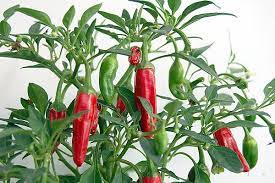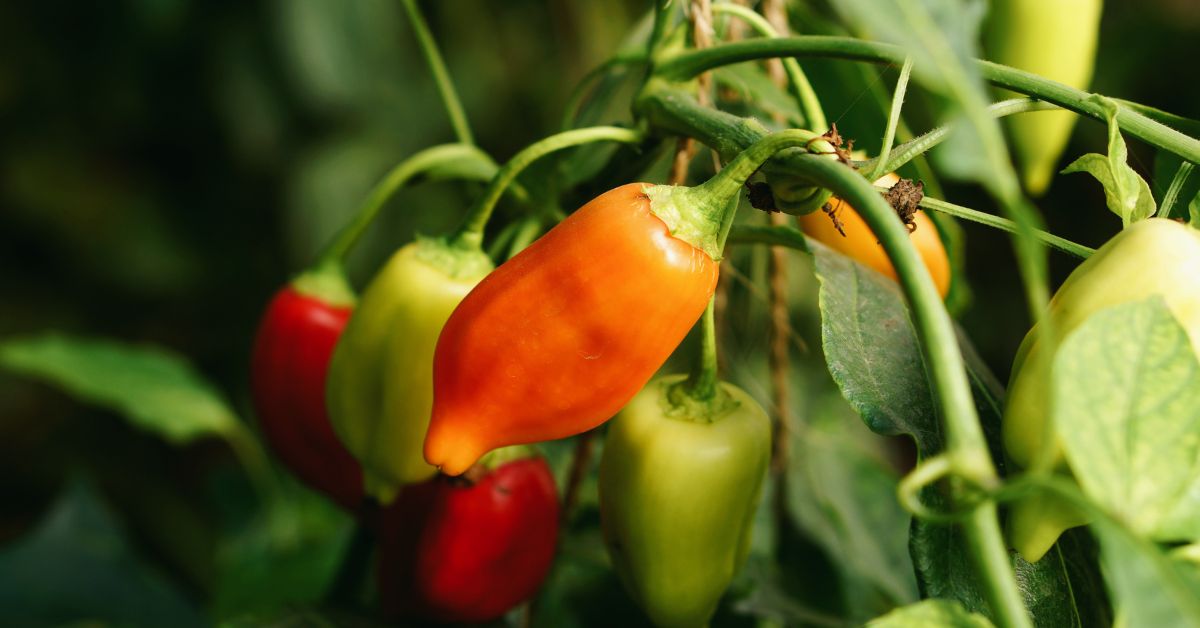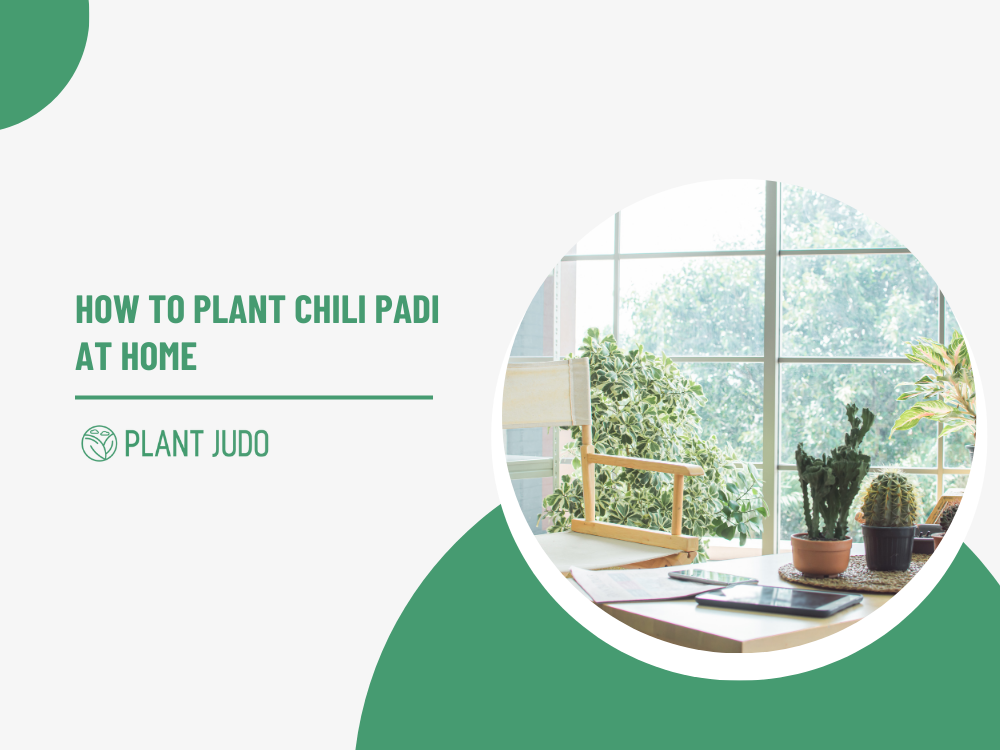Chili Padi chilies are one of the simplest vegetables to grow and maintain, and they produce a large production. They can thrive in various soil conditions, ranging from sandy to rich in nutrients and minerals. On the other hand, Chilli paddies are extremely simple to grow at home, and you don’t need to invest in a lot of expensive gardening equipment to get them started.
Because a single pepper plant can produce up to one hundred chilies, they will make an excellent addition to your kitchen garden. It will be a fantastic choice if you want to put them in your kitchen, mainly because they grow exceptionally well in containers and planters.
Even though most green chili varieties are not challenging to grow, they have slightly different requirements than most other edible crops. For example, seeds require more warmth to germinate during the winter, and plants benefit from increased drying time between waterings.
Growing a chili plant from seed can also be fun, and seeds are inexpensive. You can also get as many free trees as you want or are capable of handling. When starting with seeds, you must carefully transfer a seedling to a small pot, keeping it warm and well-watered, and then gradually increase the size of the pots as the plant grows larger.
In this article, we will show the process of planting Chili Padi from seeds in an easy way. So without wasting time, let’s get started.
What Should Be Consider Before Planting A Chilli Padi
The things that have to keep in mind are there have some recommendations that might be suitable for giving your Chilli Padi a healthy and peaceful condition-
Soil
Chili Paddies, in particular, benefit significantly from good drainage. As a result, they can grow in any type of soil, from sandy soil conditions to rich soil conditions; they prefer humid climates and high levels of moisture, which is why they are ideal for growing in Malaysia. We recommend using soil-based seeds and potting-on composts instead of potting-on fertilisers.
The application of heat to the seed compost significantly impacts the speed and percentage of germination. You can also use darker soils because darker soils contain more organic nutrients than lighter soils.
Poor and loamy soil should not be used because it can cause Chili Paddies to absorb little excess moisture from rain or incorrect watering, resulting in wet feet, waterlogging, and root rot in the future.
Planting Time
Starting your chili pepper seeds indoors in January and February is a great way to get a head start on the season. Even though you can still sow the seeds until the end of March, planting them early ensures that your chilies will be ready to harvest before summer.
The hottest varieties necessitate the most time in the greenhouse. Although many chili varieties will thrive as perennial evergreens in the tropics, some will not.
In any climate with a winter season, they will eventually die back in the autumn, usually the case. However, it is possible to help your chilli plants survive the winter with some forethought and effort. However, we do not recommend planting them during the winter months.
Sunlight
You should keep in mind that chili plants require a lot of heat to germinate, so make sure you put them in a sunny spot or buy growing lamps and leave them there for 14 to 16 hours a day. You’ll need moist, well-draining soil rich in nutrients to sow the vegetable seeds.
After a few minutes, the leaves would wither if exposed to direct sunlight due to sunburn. This comes as a surprise to a lot of new gardeners.
After all, plants require a lot of sunlight and light to perform their essential photosynthesis, but they must be exposed to bright light. However, do not place them in a shaded area because they will grow in the shade but will not produce as many fruits as you expect, so make sure you place your pot in a sunny area away from direct sun.

Planting and spacing
Plant the chili pepper plants 18-36 inches apart, with about 2-3 feet between rows, depending on their size. The plants will eventually reach a height of nearly three feet.
Water! Maintain a constant moisture level in the soil, but avoid getting it soaking wet. Another question you might have is how deep the roots of pepper plants can grow.
Typically, the roots of larger pepper plants are 18 to 24 inches deep on average. Chilies grow exceptionally well in containers, but they do have some specific requirements, one of which is the size of the container.
So don’t plant your Chili Padi in a small container as they will not produce much production as they need to.
Water
Chilli pepper plants need a lot of water because they are very thirsty. Keep the soil constantly wet, but not so wet that it’s a muddle.
Water and sun are good for chili peppers, but you don’t want to drown the plants with a lot of water because they could die. Every other day or every third day, water.
In hot weather, especially if your plants are in a greenhouse, you must water them. Usually, you will need to do this twice a day.
As the compost is dry, it will slow down the growth of the plants. In the summer, you must water the plants every day. You may only need to water your plants when it’s cold outside.
This is true for plants in the spring and fall, as well. The best thing to do is touch the top layer of soil to see if it’s wet. If it is, wait before you water.
Fertiliser
It’s good for chili paddies plants to use tomato fertilisers, compost, and well-rotted manure to grow them. Paddies usually need an excellent 5-10-10 fertiliser to grow well.
Potassium is used as K2SO4 to make things better. The use of potassium in potassium sulphate will improve the quality of chili.
It takes the nutrients from fertiliser and sends them to the roots when they need them. A suitable substrate does this.
A good soil life keeps turning organic material into nutrients that are good for the plant. So, always think about applying fertiliser when you plant.
How To Plant Chili Padi
Let’s get started with our main event and learn how to plant Chili Padi. Now, attempt to follow our directions and suggestions step by step-how. Here’s to plant them:
Step 1: Collect The Seeds And Germinate Them
Soaking seeds before planting helps to break down the natural defences against what it expects from Mother Nature, which permits the seed to germinate more quickly when it is planted.
Another reason is that, while Mother Nature actively attacks seeds, she has also equipped those seeds with an internal clock that allows them to determine when they should begin to grow. So before planting Chili Padi must germinate their seeds. As we will say now-
- Paper towels, filter paper, and even newspaper are great germination mediums for seeds and other seed slings. They are pathogen-free, and they make it simple to regulate the moisture content of the soil to ensure optimum germination. For this reason, you should place a few seeds between two layers of paper towels and wait for them to sprout.
- Place the seeds in a zip lock bag or a plastic container and seal them tightly to prevent them from escaping. If the conditions are optimal, you can anticipate your seeds germinating in as little as one day and seven days. However, if you cannot establish conditions, it may take longer. Place your seeds in a position with consistent warmth (23-30 degrees Celsius) for 2-4 days, then wait for seven days before transplanting them.
Step 2: Plant The Newly Germinated Chillies Seeds In A Tray
A basic heated tray or placing the seed pots/trays in a warm atmosphere will work just as well as a thermostatically controlled heated propagator. But you can use fill a big planting tray halfway with mild compost or potting soil before you start planting your seedlings.
Break up any large clumps of soil, and moisten the soil just before planting the seeds to ensure that the moisture is retained after the seeds have been planted. Following the planting of the germinated seeds, Drop the compost in small piles approximately 2 inches apart.
Cover the seeds carefully with additional compost, being careful not to compact the compost too much. There is no need to water the seedlings after being planted; instead, softly mist them with a spray bottle.
However, keep in mind that the compost should be damp but not wet and that it should not be watered unless it appears to be particularly dry. Cover the pots with plastic wrap or a plastic dome that fits over the seed-starting tray to help the seeds germinate more quickly.
Cover the pots with plastic wrap or a plastic dome that fits over the seed-starting tray to help the seeds germinate more quickly. This will assist in keeping the seeds moist until they germinate. Remove the cover as soon as you notice the first symptoms of green growth.
This will assist in keeping the seeds moist until they germinate. Remove the cover as soon as you notice the first symptoms of green growth.
Step 3: Plant The Seeding After They Get 5 or 6 Leaves
You should transplant your seedlings around three weeks after they sprout or when they have 1-2 sets of true leaves, whichever is earlier in the season. It’s preferable to get them into new containers before they begin to exhibit the stress indicators indicated in the next section.
The best method is to transplant your chili plant seedlings to a larger space once they have grown to around 2 inches (5 cm) tall and have 5-6 leaves. This will prevent their roots from becoming constricted. Lift them out of the tray with care.
Make every effort to cause as little disruption as possible to the roots. To avoid stressing the roots of the seedlings, water them thoroughly before removing them. The question now is, how large should the pot be in proportion to its contents?
Then a circle roughly 2.75 inches (7 cm) in diameter is appropriate, and the compost should be placed inside. To plant your Chili Padi, dig a hole in the potting soil and place it in the center of the hole you just created.
After you’ve planted them, lightly wet the compost around them and bring them indoors where you can place them under grow lights in a warm environment.
Step 4: Upgrade The Pot As Your Chili Padi Grow
When you detect any of the following, you’ll know your plant requires a larger container: The soil condition has deteriorated and appears to be dry. The plant can no longer absorb water; it simply remains in place.
The drainage holes become clogged as the plant attempts to spread its roots into the drainage openings. That’s why upgrading the pot is essential to give your plant a new room to make them well thrived. Repotting can also be beneficial for plants in terms of stress reduction, but it is not something that should be done regularly or without thought.
Repotting offers the plant more space to grow while also refreshing the soil, which can get depleted of nutrients over time. Make a well in the center of a larger pot by filling it with compost and placing it on the ground.
Gently pull out the plant, leaving a massive clump of compost around its roots to protect it, and set it in the larger pot. Repeat the process with the second plant.

Step 5: Place Your Chili Padi In A Warmth, Light Condition and Give Them Proper Water
Set up your potted chili plant next to a window or outside so that it can get plenty of sunlight, but remember to bring it inside if the temperature lowers. The amount of light that the plant receives will directly impact the rate and size of its development.
In the absence of a yard or balcony, you may grow chili plants indoors if you put them in an appropriate container. But h, having too little light might be an issue when growing chiles in a small space.
You can overcome this problem by purchasing a miniature greenhouse or installing artificial lighting.
The most crucial thing to ensure is that the lawn is adequately watered. During warmer weather, significantly if your plants are being grown in a greenhouse, you will need to water your plants frequently, usually twice a day.
Feed plants with a general-purpose liquid fertiliser every two weeks to keep them healthy. As a result of the dry compost, their growth will be curtailed. However, make sure that the soil is moist but not swampy to avoid overwatering the plants.
FAQ
What is the best way to grow chilli plants?
Image result for how to grow Chili Padi in your yard. It is preferable to start sowing chilli seeds as early as January in wet, peat-free multi-purpose soil and keep them in a warm propagator under a grow light to avoid seedlings becoming leggy later in the season.
How long will a chilli plant live?
Chillies range from 1.5 to 15 years, depending on the species. Chiltepin, a wild species that grows like a tiny bush in the wild, is a perennial. This wild type can persist without being frost-damaged for 35 to 50 years in the Texas, Arizona, and Florida regions of the United States.
Why is my chilli plant dying?
According to statistics, improper watering techniques are the most common cause of chilli plant death. Excessive or insufficient watering of your chilli plant can contribute to a weakened or diseased plant. A plant cannot thrive if it does not have access to water. Too much water, on the other hand, can be fatal to your plant.
Conclusion
Chili Padi may be grown at home in several ways. All processes, recommendations, and instructions are now yours to follow. If you still have questions, ask them in the comments section. We will answer your message.
Good luck, and have a great day!!


